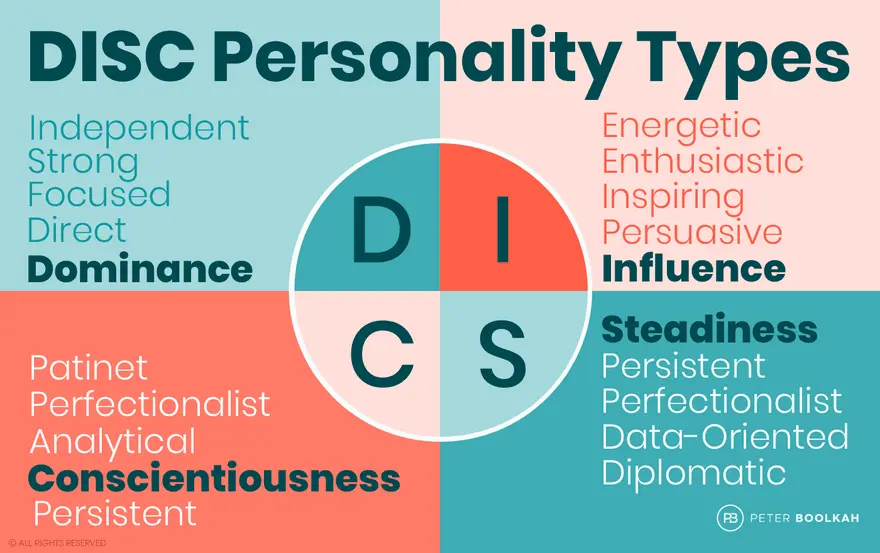Characteristics of the C Behavioral Style (Blues) in the DISC Model
- partedu

- Jul 22
- 4 min read

Behavior refers to the set of observable actions and reactions of an individual in different situations and conditions. Understanding people's behavioral styles helps us manage our interactions with others and fulfill our expectations from relationships. In the previous issue, we discussed the S behavioral type, its strengths and weaknesses. In this issue, we intend to examine one of the four main DISC behavioral styles.
Try to compare what you read in this article and previous ones with your own behavior or that of those around you, so you can better understand yourself and others.
In this issue, we will take a closer look at the C behavioral style, also known as the Blue type, which stands for Conscientious, meaning "responsible" or "conscientious." One reason colors are assigned to each behavioral style is to symbolically represent a person's temperament through the psychological effects colors create in the human mind. When you think of the color blue and its connection to a person's mood, what comes to your mind?
The C behavioral style or Blue refers to people who like to do things precisely and prefer to accept things only after thorough research. C types are introverted. They listen more and talk less. They go deep into details, care about quality, are highly accurate, logical, and outcome-oriented.
C types are logical, similar to D types. They are focused on results—if they do something, it must yield a result. However, C types do not show much outward excitement. They pay attention to detail even in tasks others might find trivial. They love research and gathering various pieces of information about everything.
When C types do something, they expect a tangible outcome. Unlike the D type, a C individual doesn’t necessarily expect the result to benefit themselves. What matters is that the task produces a result, even if it’s not personally advantageous.
C types often feel weaker than their environment, making them prone to low self-confidence. This manifests as a persistent sense that their skills and expertise are never enough, even if they have worked hard to develop them. They tend to undervalue themselves and are susceptible to imposter syndrome—a cognitive bias first identified in 1987 by two psychologists, describing individuals (often women) who downplay or dismiss their own accomplishments and successes.
C types do not initiate communication and tend to respond according to the situation rather than proactively engage. They are task-oriented and introverted. They are indirect in communication and typically interact with a closed guard—meaning they do not readily agree with others and initially approach people and situations with suspicion. They pay more attention to negatives than other behavioral types and repeatedly double-check the results of their actions. As a result, they may appear slow in their work.

C types, or Blues, are described with words such as: conscientious, adaptable, knowledge-seeking, cautious, competent, calculating, thoughtful, detail-oriented, and fond of reading. Their symbol is information gathering, and their core trait is being analytical. They spend most of their time immersed in knowledge and information, and sometimes when they speak, they share things that might seem unnecessary to other behavioral types—but are fascinating to them. They often know facts that the average person might find irrelevant, boring, or not worth the time to listen to.
Each behavioral style has its own strengths and weaknesses. Let’s explore some strengths of the C type. Blues are very thoughtful. In almost any area they enter, they appear talented. They are sharp, alert, drawn to intellectual challenges, always searching for the best ideas, highly creative, full of ideas, with inventive and analytical minds. They are fair critics—able to see both strengths and weaknesses without bias. They are skilled at breaking down projects into smaller parts and analyzing them. They think deeply before taking action. They consult qualified individuals. They check the results of their research or study multiple times. They are highly perfectionistic, often spotting even the tiniest flaws.
Some of the weaknesses of the C or Blue type include their need for clear boundaries before taking action in a particular area. They are often limited by rules and procedures, tend to get lost in details, and sometimes fail to see the bigger picture. They prefer not to express their emotions, tend to speak in an overly rational way, and have a fear of being criticized. Usually, they find it difficult to initiate conversations.
They need a calm and quiet environment to work effectively. When trying to connect with them, start by talking about accuracy and quality.
When a C type speaks on the phone, you’ll hear a steady pace, and they usually speak softly and calmly. Their conversations tend to include topics like planning, thorough analysis, timing, rules, logic, order, and thinking. They rarely express personal opinions.
Their tone of voice has very little variation, they show limited range in topics, focus on quality, and speak in a formal, textbook-like manner.
When communicating with C types, be structured and systematic. Provide lists of pros and cons. Try to use written communication whenever possible, like messaging apps or notes. Give and request written records. Provide evidence and reasoning for every claim. Don’t rush them in decision-making. Pay attention to details.
C types are prone to withdrawal and isolation. Spending a few days alone with books doesn’t make them feel lacking at all. They are cautious when expressing emotions and enjoy their independence. Blues connect well with books and computers but often feel uncomfortable in group settings.
I hope this brief article has helped you better understand the C behavioral style.




Comments